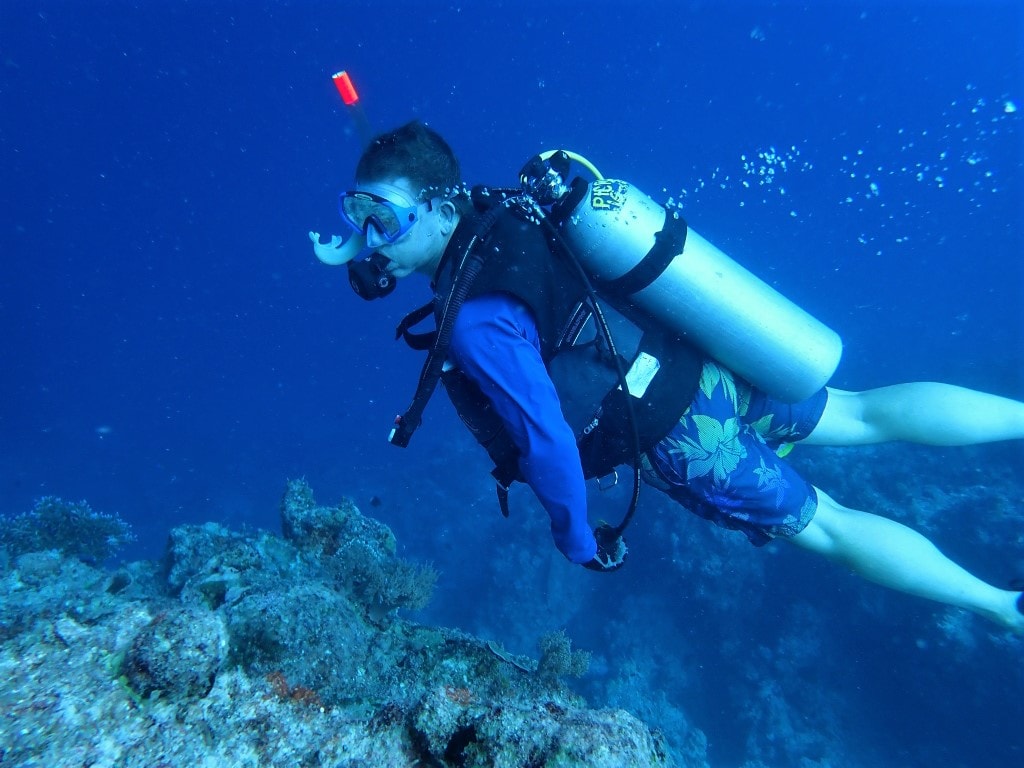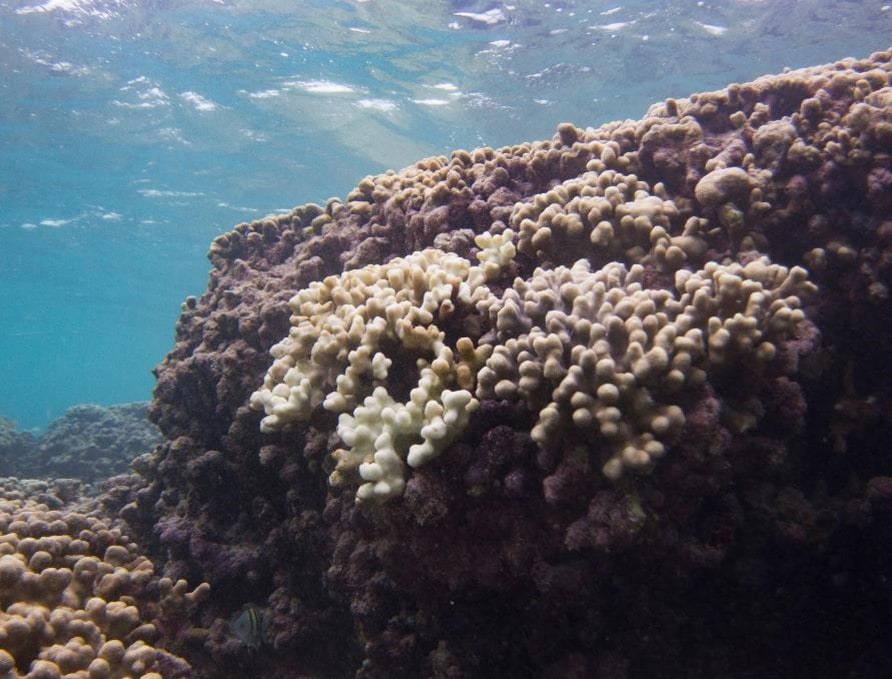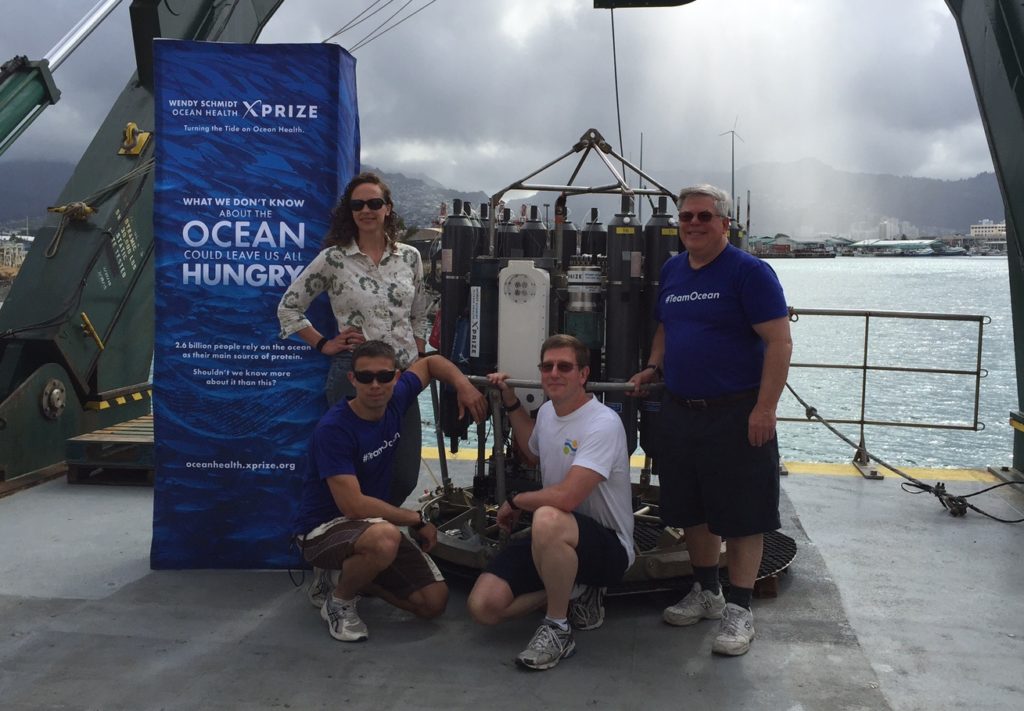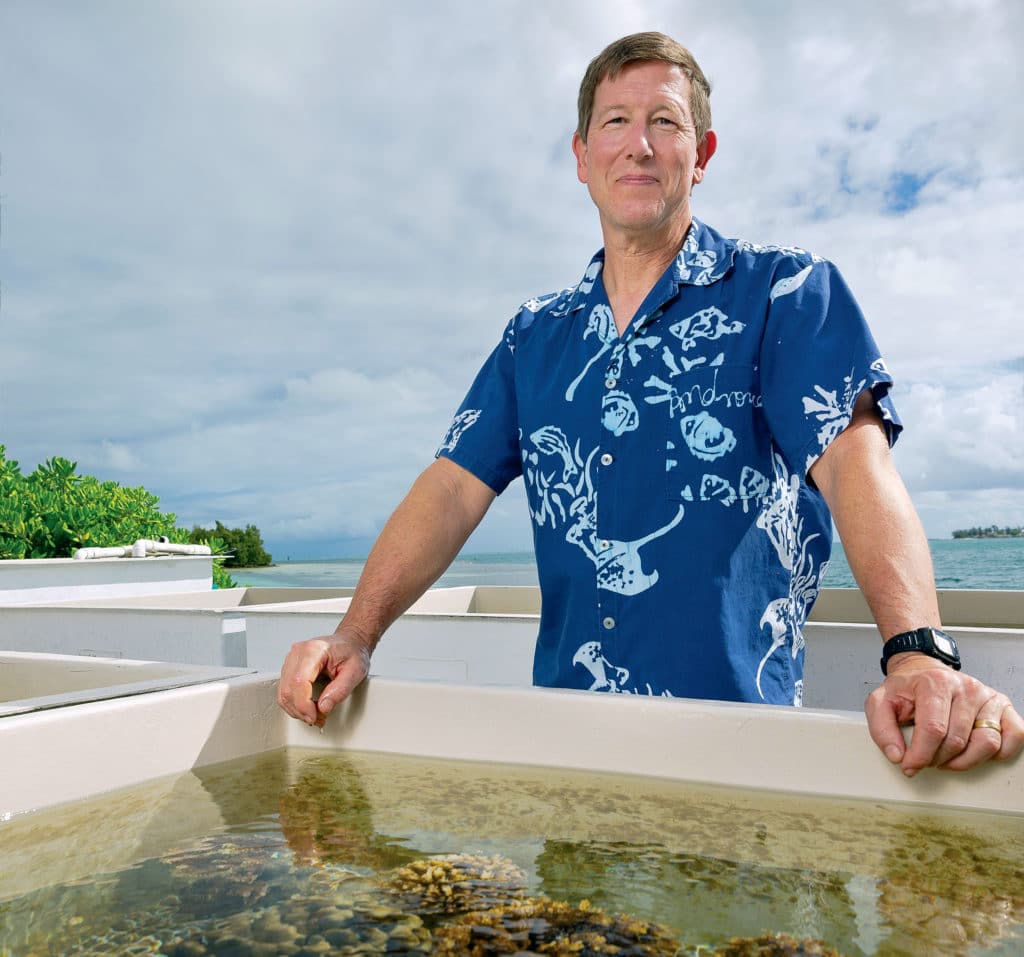Understanding the Chemistry That Impacts Marine Ecosystems and the Environment
By now, everyone has heard that the rise in atmospheric carbon dioxide (CO2) from the burning of fossil fuels is changing the Earth’s climate. Sea level rise and an increased threat of hurricanes are some of the more well-known implications of climate change affecting Hawai‘i and the world. However, what is not commonly known or understood, is that rising CO2 levels affect the chemical and physical properties of the Earth’s oceans and have even broader implications to the environment than climate change.
Rising air temperatures, the signature impact of climate change, only accounts for about one percent of the excess energy trapped by rising CO2. The vast majority of the excess heat from greenhouse gases, about 93 percent, is stored in the ocean.
Similar to a giant sponge, the ocean absorbs a quarter of the excess CO2 produced every year from human activities (anthropogenic carbon) around the world. Carbon dioxide dissolves in the surface water and through the overturning circulation of ocean currents and mixing processes, is slowly transported into the ocean’s interior— which allows the surface ocean to absorb more CO2. In this cycle, CO2 reacts with the water molecules in the ocean to form carbonic acid in a process known as ocean acidification. Like ocean warming, an increase in ocean acidification can also have a profound impact on marine ecosystems.

University of Hawai‘i at Mānoa (UH Mānoa) Oceanography Professor Christopher Sabine has devoted his life to understanding the connections between the ocean and anthropogenic carbon. After earning his PhD in chemical oceanography at UH Mānoa in the early 1990s, Sabine spent the next decade conducting high-quality carbon measurements in an effort to better understand where inorganic carbon is stored in the ocean.
“Initially, we were thinking that ocean storage of anthropogenic carbon was a good thing,” said Sabine, who also serves as the associate dean for research at UH Mānoa’s School of Ocean and Earth Science and Technology. “While producing the first robust, global synthesis of anthropogenic carbon based on direct ocean carbon measurements, we in the scientific community came to the realization that the accumulation of over 100 billion metric tons of anthropogenic carbon in the ocean would negatively impact marine organisms in ways not considered previously.”
With this discovery, the field of ocean acidification research was created. Today, researchers have written tens of thousands of articles on ocean acidification, a term that did not exist 20 years ago.
Over the course of a distinguished 18-year career with the National Oceanic and Atmospheric Administration (NOAA) that began as an entry level oceanographer and culminated as director of the prestigious Pacific Marine Environmental Lab, Sabine helped develop the initial ocean acidification observing network in the waters around the U.S. He continued to focus his research on understanding ocean carbon cycling and the progressive development of ocean acidification around the world.
One of the initial concerns with ocean acidification was the impact it would have on calcifying organisms, that is, creatures that produce calcium carbonate skeletons or shells. Calcium carbonate is what forms the white sand beaches of Hawai‘i. It is formed when corals, or other calcifying organisms, take a dissolved calcium ion and a carbonate ion and put them together to create a solid, calcium carbonate.

“As the ocean absorbs more CO2 from the atmosphere, the concentration of carbonate ions decreases — nearly 20 percent so far,” said Sabine. “With less carbonate ion in seawater, it becomes more difficult for corals and other calcifiers to form their critical skeletons and shells.”
As research has progressed on ocean acidification, many other complicated effects on marine ecosystems have come to light. The changing chemical composition of the ocean has also been linked to hearing loss in fish due to enlarged otoliths (ear stones), disrupted reproductive cycles, increased frequency and toxicity of harmful algal blooms, and decreased sound absorption in the ocean.
Recognized as a pioneering leader in ocean acidification research, Sabine has significantly contributed to the growing body of national and international research programs over the last two decades. He has been a scientific advisor for a number of national carbon programs in the U.S. and internationally. He has won numerous awards, including the U.S. Department of Commerce Gold Medal Award for pioneering research leading to the discovery of increased acidification in the world’s oceans and was recognized by the Intergovernmental Program on Climate Change (IPCC) for his contributions to the IPCC, when they were awarded the Nobel Peace Prize in 2007. He was also a coordinating lead author on the carbon cycle chapter of the IPCC 5th Assessment Report and in 2013, was made a fellow of the American Geophysical Union.

As time passed and the ocean’s load of anthropogenic CO2 increased by over 50 percent, Sabine realized that he was spending all of his time on administrative responsibilities and no longer had time for his passion — conducting research out on the ocean. When a carbon chemist position opened up at UH Mānoa’s Department of Oceanography, Sabine literally jumped at the opportunity.
“It was a chance to refocus my career,” said Sabine. “It was an opportunity to return to the ocean and look for solutions to the problems I had been studying for the last three decades.”
Since starting as a full professor at the beginning of 2018, Sabine has been monitoring ocean carbon concentrations around Hawai‘i using autonomous, buoy-based systems he helped develop as a researcher with NOAA. He is also working with colleagues to develop and test new instruments for measuring ocean acidification, as well as methods to better understand the impacts of climate change and ocean acidification on Hawaiian corals.
“Corals are a particularly vulnerable species because they are sensitive to rising ocean temperatures through a phenomenon known as coral bleaching, and they exhibit slower growth rates and increased fragility from ocean acidification,” said Sabine. “These combined stresses, together with an increased risk of damage from a possible hurricane or drowning from rising sea levels, are a grave concern for Hawai‘i’s coral reefs.”
Ultimately, Sabine hopes to explore more proactive ways to protect and restore Hawai‘i’s coral reefs. In the meantime, he also teaches a Global Environmental Change class in an effort to inspire the next generation of researchers to help find solutions. “The ocean uptake and storage of human-produced CO2 has significantly decreased the climate change effects the planet has seen so far,” said Sabine. “Getting a handle on how much more the ocean can take is critical in predicting future climate change impacts.”

